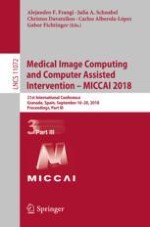2018 | OriginalPaper | Chapter
Joint Prediction and Classification of Brain Image Evolution Trajectories from Baseline Brain Image with Application to Early Dementia
Authors : Can Gafuroğlu, Islem Rekik, [Authorinst]for the Alzheimer’s Disease Neuroimaging Initiative
Published in: Medical Image Computing and Computer Assisted Intervention – MICCAI 2018
Publisher: Springer International Publishing
Activate our intelligent search to find suitable subject content or patents.
Select sections of text to find matching patents with Artificial Intelligence. powered by
Select sections of text to find additional relevant content using AI-assisted search. powered by
